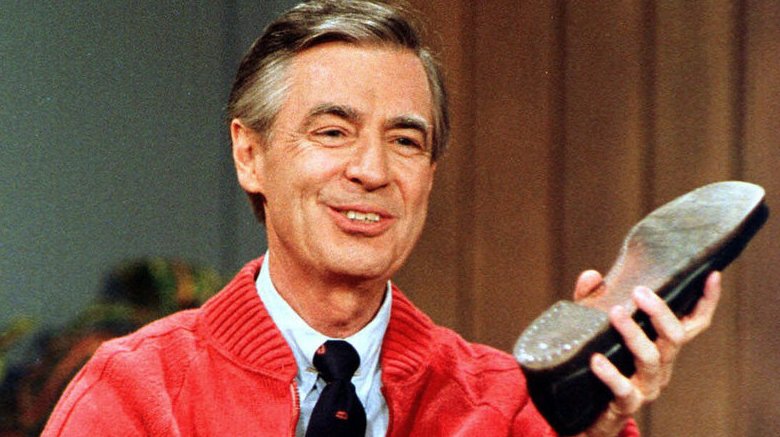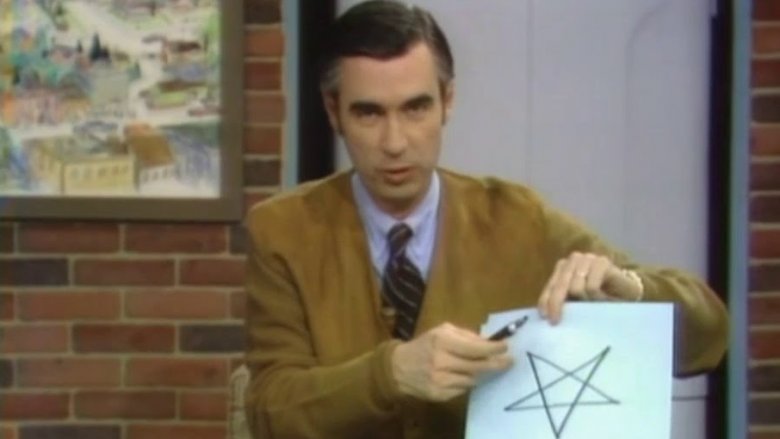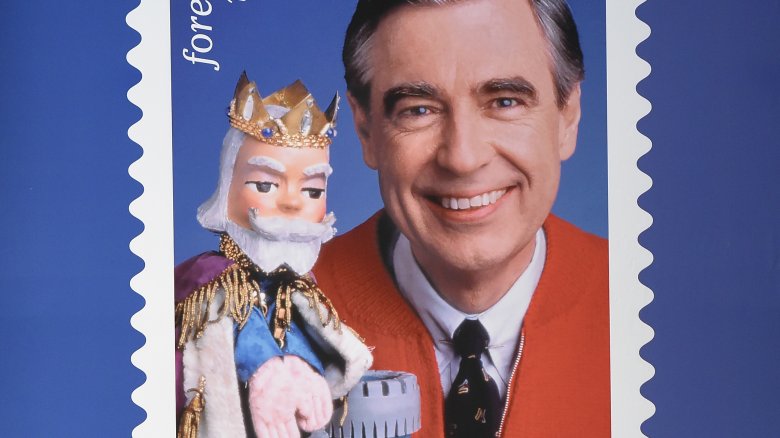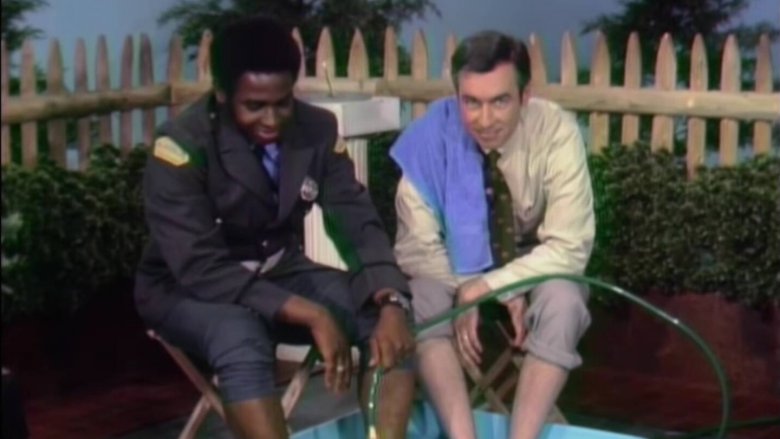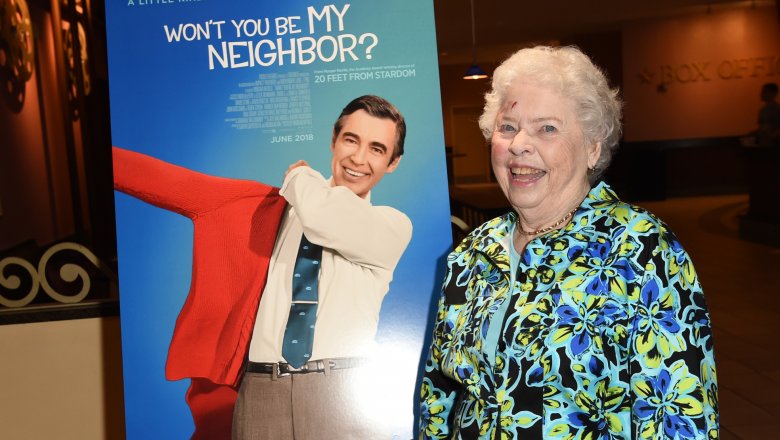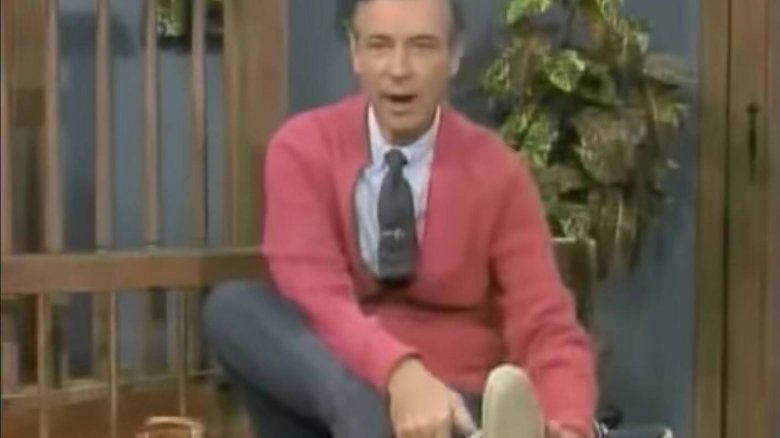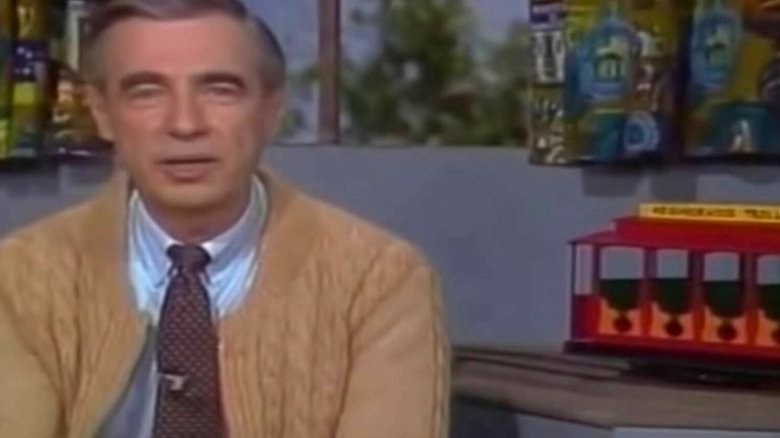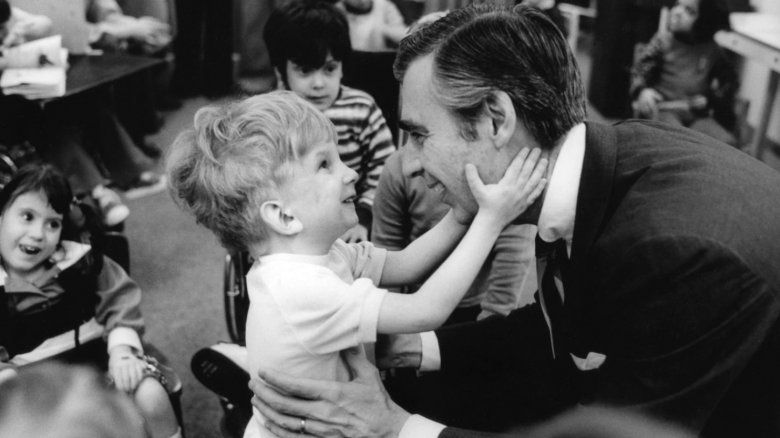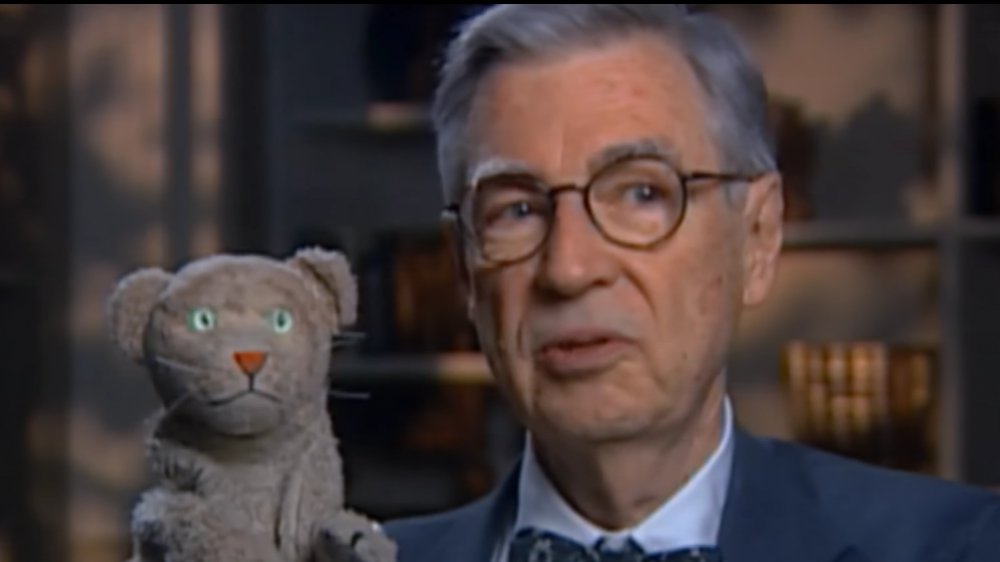What's Come Out About Mister Rogers Since He Died
In a world where friendship is often skin-deep, Fred Rogers made children feel special for who they were inside. Not even the puppets in Mister Rogers' Neighborhood had strings attached. They were an extension of a simple yet powerful message: Children deserve to be loved and taken seriously.
Rogers used his stardom to shine a spotlight on children. He once derailed an episode of the Oprah Winfrey Show because he couldn't bring himself not to respond to kids who asked questions or wanted hugs. His gentle-hearted regard for others didn't vanish once the cameras stopped rolling. He seemingly replied to every piece of fan mail he received and tried to befriend everyone he met.
No matter how dark life seemed, Rogers was a constant, comforting light who went out of his way to make the world less scary. So when he passed away in 2003, people of all ages were heartbroken. But buried in that deep, collective ache was something special: a recognition that each day Mister Rogers greeted us was more beautiful because he was in it. So let's make the most of this beautiful day. Since we're together, we might as well say what's come out about our dear neighbor.
A puppet show for a coma patient
Being hospitalized for a serious illness is a uniquely miserable experience. If you stay for days, you'll spend sleepless nights receiving sterile serenades from beeping machines. And if you need a risky surgery, you'll get bombarded with uncomfortable tests to assess your chances of survival. In such moments it means the world to have a special friend in your corner. For Beth Usher that friend was Fred Rogers. Usher shared her ordeal with Today in 2018 as part of a tribute to Rogers.
As a child Usher suffered from a rare and debilitating disease called Rasmussen's encephalitis, which was destroying her brain cells and causing up to 100 seizures per day. As a result she frequently fell and slammed her head against the floor or nearby objects. At age 5 she had to have half of her brain removed. (Fun fact: Her surgeon was future HUD Secretary Ben Carson.)
Watching Mister Rogers brought Usher solace, so her mother contacted Rogers' assistant in hopes of getting an autographed picture. Instead, Rogers called and spoke to young Usher for an hour about her fears and favorite puppets from his show. After her operation, Usher fell into a weeks-long coma. Rogers, an ordained minister, prayed with Usher's mother over the phone and eventually flew from Pittsburgh to Baltimore to see Usher. He greeted the unconscious child with her favorite puppets and made her "the star in his neighborhood" for an hour. Their friendship would last a lifetime.
He wouldn't want to be seen as a saint
There's no shortage of amazing anecdotes about Mister Rogers. According to one extremely grateful father, Rogers' show was the reason his son with severe autism uttered his first words: "X the Owl." The first time the child made eye contact with his dad was to say, "Let's go to the Neighborhood of Make-Believe," and from there he learned to read and speak. Rogers himself once spoke of a child abuse victim who was inspired by his show to call a hotline for help. The child ended up being adopted by the hotline operator. Love Boat actress Lauren Tewes claimed an episode of Mister Rogers' Neighborhood inspired her to kick her cocaine habit.
Given Rogers' almost miraculous impact on people and his legendary kindness it's unsurprising that Atlantic contributor Jonathan Merritt wrote that "if Protestants had saints, Mister Rogers might already have been canonized." But as Won't You Be My Neighbor? director Morgan Neville revealed in 2018, Rogers' widow, Joanne, said her husband wouldn't have wanted such high praise. "Fred's struggle was often against people who didn't take him seriously and understand the profundity of his message," she reportedly told Neville. "Treating him like a saint keeps him two-dimensional. His mission was to tell us that we all struggle, and he doesn't exist on another plane." So while it's tempting to liken Rogers to an even sweeter Ned Flanders, he wanted to be seen as just like the rest of us.
The long-lost Cold War episodes
Rogers had a gift for distilling daunting topics into child-friendly puppet skits. But in November 1983, he tackled an issue that was apparently so incendiary that the related episodes "were pulled from syndication and future releases," per the Daily Beast. Dubbed the "conflict series," it was a five-part allegory for Cold War arms proliferation. And in March 2017, two full episodes from that series were posted on YouTube, marking the first time in 33 years that the public could view them.
Set in the Neighborhood of Make-Believe, the conflict series tells the story of King Friday's misguided quest to amass a million bomb parts. Driven by ill-informed paranoia, Friday believes a factory owner named Corny is building a bomb for a nearby town. So he tells all the Make-Believe residents to arm themselves in preparation for war. Children don gas masks and have air raid drills. But all the doomsday preparation proves unnecessary because Corny was actually just building a bridge.
It's unclear why it took more than three decades for someone to post full episodes, but the uploads coincided with the release of a Trump administration budget proposal that would have allocated zero federal funding for public broadcasting and dramatically increased military spending. The clips were soon removed, but maybe they'll resurface if the U.S. gets another raging case of Cold War fever.
He asked Officer Clemmons to stay in the closet
In 1968, Mister Rogers asked Francois Clemmons (above), a black man who grew up in the ghetto, to play the neighborhood policeman on his show. It was a brilliantly subversive gesture on Rogers' part. In the middle of the civil rights movement, he cast a black man as a friendly authority figure. It was also significant because, as Clemmons told the New York Post, he (Clemmons) had "always thought of police as being the most dangerous person in the neighborhood." But there was also a hidden level of complexity that defined his relationship with Rogers.
In addition to facing racial tensions of the time, Clemmons had to grapple with being gay in an era when therapists subjected homosexuals to electric shocks in an effort to change their orientation. Rogers learned about Clemmons' sexuality a few months after the latter was hired. Worried about backlash from conservative viewers, he asked Clemmons to stay closeted.
Clemmons complied and even married a woman, but these sacrifices didn't spoil his view of Rogers. As he explained to Variety in 2018, he saw Rogers as a "surrogate father" and he was treated like a son. When Martin Luther King Jr. was assassinated, Rogers personally picked up a distraught Clemmons from his home out of concern for his safety. "I never had someone express that kind of deep sense of protection for me," Clemmons recalled. Over time, Rogers' views evolved and he sought out openly gay guests for his show.
What Rogers' family revealed
Many of us who loved Mister Rogers only knew him through his show. But a lucky few knew him as a literal family member. They saw what made him tick and what ticked him off. And thanks to the 2018 documentary, Won't You Be My Neighbor? the public got a glimpse of those perspectives.
In a Today interview about the film, Rogers' widow, Joanne (above), recalled how her husband of nearly 51 years proposed. In the most Mister Rogers move ever, he wrote her a letter, which is all the more adorable when you consider that his iconic show didn't exist yet. Rogers and Joanne would have two sons, James and John. In Won't You Be My Neighbor? James revealed how his father vented his anger. Rather than shout or dole out neighborly spankings, Rogers spoke in the voice of his often grumpy puppet Lady Elaine Fairchilde.
As it turns out, Rogers used his puppets to reflect facets of his personality. RogerEbert.com noted that King Friday XIII embodied his desire for control. According to Joanne, the sweet and insecure Daniel Striped Tiger "was the real Fred." Rogers struggled with deep self-doubt throughout his life and even on his deathbed. Some have even speculated based on a letter he wrote that he suffered from depression. So when Daniel Striped Tiger sang, "Sometimes I Wonder if I'm a Mistake" on Mister Rogers' Neighborhood, there's a good chance it wasn't just make-believe.
His sweaters and sneakers served multiple purposes
The intro to Mister Rogers' Neighborhood is a precious childhood memory in itself. Even now the thought of Rogers walking through that front door fills many hearts with a familiar joy. Every young fan knew what came next. He'd hang up the jacket, put on a sweater, and switch out the loafers for sneakers, all while singing about how much he looked forward to his viewers. The process was beautifully mundane and full of meaning.
You might know from watching the show that Rogers' mother personally knitted his sweaters as a way of saying "I love you." After she died, the show's staff purchased similar-looking sweaters and dyed them to keep the tradition going. The clothes didn't just have sentimental value, though. In 2014, the Fred Rogers Company wrote that the "predictability offered a sense of security" to children. And since Rogers was remarkably thoughtful, he based his routine on what viewers might expect at home.
Because the show originally aired late in the afternoon (around the time parents typically returned home from work), Rogers switched from jackets to sweaters to signify that work time was over. Similarly, putting on sneakers was meant to create a more casual atmosphere. The sneakers also allowed Rogers to quietly walk over to the Neighborhood of Make-Believe on the set. Everything he did was geared toward making kids comfortable.
The carefully crafted simplicity of his show
For a show catered to young children, Mister Rogers' Neighborhood relied on some pretty sophisticated reasoning. Rogers consulted child psychologists when writing scripts for the show. Perhaps his biggest influencer was the eminent child expert Margaret McFarland, with whom he studied in the 1950s. "Both were experts in gentle persuasion," according to Nature. McFarland's child-centric approach to teaching, which emphasized empathy and storytelling, greatly informed Rogers' show.
Recognizing how literal kids could be when interpreting language, Rogers went out of his way to make scripts as unambiguous as possible. Author Maxwell King described just how meticulous Rogers was in a 2018 piece for the Atlantic. According to former producer Arthur Greenwald, "there were no accidents on the show." If the script required Rogers to talk about "blowing up a balloon," he would change the wording to say "puffing up" so no child would mistakenly expect an explosion. He was so specific about language that the show's writers coined the term "Freddish" to describe Rogers' rules for communicating with children.
Rogers also insisted on consistency. Washington Post contributor Maura Judkis, whose family knew Rogers, described a time when he "did a flawless reading of some dialogue" but the trolley traveled in the wrong direction. He reshot the scene so the trolley rolled in the direction kids would expect. That doesn't mean he demanded perfection. Rogers once kept a take in which he botched a song lyric to show kids that grown-ups make mistakes.
The heartwarming photo of Tommy Paulhamus
Mister Rogers was like a warm hug — caring, comforting, and something people turn to in times of sadness. So when 20 children, all aged 6 to 7, and six educators lost their lives during a school shooting in Newtown, Connecticut, in 2012, many people wanted that hug. The internet provided it in the form of a photo that featured a little child delightedly holding Rogers' smiling face in his little hands. Included with that image was a poignant Mister Rogers quote which reads in part: "When I was a boy and I would see scary things in the news, my mother would say to me, 'Look for the helpers. You will always find people who are helping.'"
The image went viral and caught the eye of Maura Judkis, whose father had snapped the picture while working as Rogers' photographer. In 2013, she shared the backstory of the little boy. His name was Tommy Paulhamus, and he had hydroencephalitis, which caused fluid to accumulate around his brain. His birth mother didn't want him, so he spent several years of his life at a facility for disabled children before being adopted.
The photo was taken on a day Rogers visited the facility. Tommy was a huge fan and "immediately" greeted him. As Judkis' father put it, the image "shows the pure attraction, the love. ... It's like he's seeing God, touching God."
Mister Rogers' final message to his fans
One of the saddest things you can say to someone who loves you is a true goodbye. Not "goodbye for a long time" or "maybe we won't see each other again," but a permanent, irreversible goodbye. For the person hearing it, everything starts to look and taste like tears. Months before Mister Rogers succumbed to stomach cancer, he recorded a short message for the grown-ups who watched him as children. It was the last recording he ever made at WQED studios, where Mister Rogers' Neighborhood was filmed. He never explicitly says goodbye, but you can almost feel tears of finality.
In his message Rogers tells his viewers he's proud of them and offers words of encouragement: "I know how tough it is some days to look with confidence on the months and days ahead," he says. "But I would like to tell you what I often told you when you were much younger — I like you just the way you are." He then thanks his grown-up fans who help the children in their lives feel safe and free to express themselves. The clip ends with Rogers doing what he's always done: making other people feel valued. "It's such a good feeling to know that we are lifelong friends."
He said his final goodbyes from his deathbed. Speaking with his longtime friend Pastor Bill Barker, Rogers whispered, "I love you." "Not just for me," according to Barker, "but for you and everybody else."
Mister Rogers amused his wife by farting
Millions of children have probably imagined shooting the breeze with Mister Rogers. But never in a million visits to the Neighborhood of Make-Believe did kids picture a scenario in which Rogers tooted the breeze instead. One can only hope his farts sounded like the happy-go-lucky whistle of his iconic trolley. But his widow, Joanne, didn't have to hope or imagine her husband's flatulence. As she explained in a 2019 interview, if they ever attended a boring event, to liven things up "He would just raise one cheek and he would look at me and smile."
Passing gas wasn't a show of passive-aggression for Rogers, who used his toots to amuse his wife. In fact, she laughed while recounting his antics. Did he ever speak in puppet voices before cutting the cheese in the least grating way imaginable? He was known to speak in the voice of Lady Elaine to express anger at home, per USA Today. But Joanne said Rogers was Daniel Striped Tiger at heart, and it's kind of magical to imagine him using Daniel's voice to tell you he just farted.

